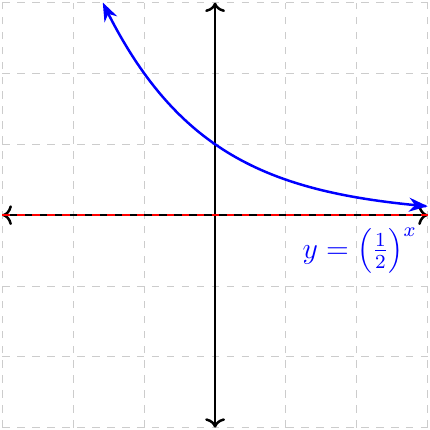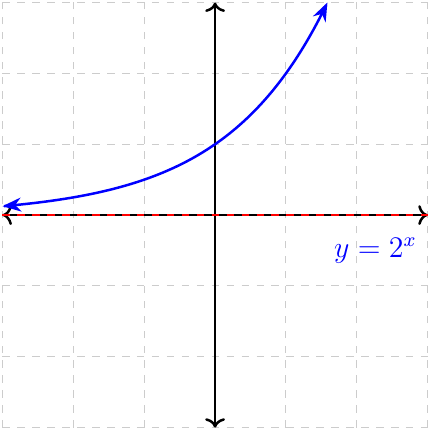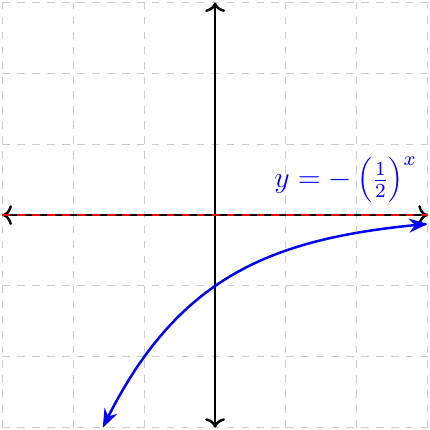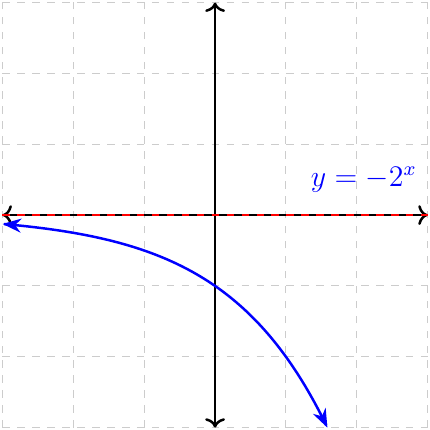Characteristics of exponential functions
كتاب روابط اجتياز لـ Characteristics of exponential functions
Domain
The domain of an exponential function is always all real numbers.
Range
The range of the parent exponential function \(f(x)=b^x\) is \(\{y\in\mathbb{R}\mid y\gt 0\}\). It is affected by vertical translation and reflection around the \(x\)-axis (see the table below).
\(x\)-intercept
The parent exponential function \(f(x)=b^x\) never crosses the \(x\)-axis; hence it has no roots. It can have a single root if and only if it is vertically translated so that it crosses the \(x\)-axis.
\(y\)-intercept
The parent exponential function \(f(x)=b^x\) always passes through the point \((0,1)\). It always has a \(y\)-intercept. The exact location of the \(y\)-intercept is affected by vertical stretch/compression and vertical translation.
Horizontal asymptote
An exponential function always has a horizontal asymptote. The parent function \(f(x)=b^x\) has the asymptote at \(y=0\) (i.e. the \(x\)-axis). The location of the asymptote is affected by vertical translation only.
End behaviour
| \(\boldsymbol{0\lt b\lt 1}\) | \(\boldsymbol{b\gt 1}\) | |
|---|---|---|
| \(\boldsymbol{f(x)=b^x}\) |

\(y\to\infty\) as \(x\to-\infty\) \(y\to 0\) as \(x\to\infty\) Decreasing Range \(\{y\in\mathbb{R}\mid y\gt 0\}\) |

\(y\to 0\) as \(x\to-\infty\) \(y\to\infty\) as \(x\to\infty\) Increasing Range \(\{y\in\mathbb{R}\mid y\gt 0\}\) |
| \(\boldsymbol{f(x)=-b^x}\) |

\(y\to-\infty\) as \(x\to-\infty\) \(y\to 0\) as \(x\to\infty\) Increasing Range \(\{y\in\mathbb{R}\mid y\lt 0\}\) |

\(y\to 0\) as \(x\to-\infty\) \(y\to-\infty\) as \(x\to\infty\) Decreasing Range \(\{y\in\mathbb{R}\mid y\lt 0\}\) |
In the table above, \(0\) is the location of the asymptote, so this changes if the function is vertically translated.
Increasing and decreasing intervals
An exponential function is either always increasing or always decreasing. A function that is always increasing or always decreasing over its entire domain is called a monotone. Therefore, an exponential function is monotone increasing or monotone decreasing depending on the base, and whether or not it is reflected around the \(x\)-axis (see the table above).